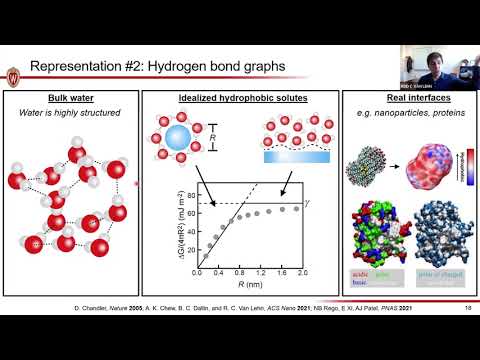Description:
Explore the intersection of molecular dynamics simulations and machine learning to quantify interfacial hydrophobicity in this 32-minute conference talk. Delve into the challenges of analyzing high-dimensional datasets generated by classical molecular dynamics simulations and discover innovative machine learning approaches for efficient data analysis. Learn how these techniques can be applied to understand the hydrophobicity of functionalized interfaces, a crucial property in aqueous environments. Examine the impact of different data representations on machine learning method selection and prediction accuracy. Investigate the potential of topological data analysis in outperforming complex machine learning models when analyzing molecular dynamics output. Gain insights into the use of density matrices, hydrogen bond graphs, and Euler characteristics in hydrophobicity quantification. Understand the application of LASSO regression for feature selection and the analysis of important features in predicting interfacial hydrophobicity.
Read more

MD Simulations and Machine Learning to Quantify Interfacial Hydrophobicity
Add to list
#Computer Science
#Machine Learning
#Feature Selection
#Science
#Chemistry
#Computational Chemistry
#Data Science
#Topological Data Analysis